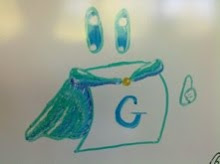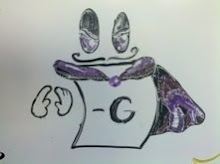After thinking about programming all day, it's not difficult to pick apart game rules and consider potential ambiguities. I'm teaching my algorithms class to be sure that any algorithm they write by hand be precise, and I often wish game rules were spelled out with a similar notation.
(Example using a property-type board game.)
Step 1: Set the board up according to the section Setup.
Step 2: Let p be 1.
Step 3: Player p rolls the two dice, then advances their piece clockwise around the board.
Step 4: Let s be the square containing their piece. If s contains an unowned property, continue to step ?.
Step 5: Let h be the number of houses on s and q be the player who owns the property at square s. p owes q $X where $X is the amount listed in the h-th entry of property s. Go to step 7.
Step 6: p may purchase the property... ...
Step 7: Increment p. If p is greater than the number of players, let p = 1. Continue to step 3.
Using the standard notation for Combinatorial Games, this is not an issue; all rules for play are considered the same! All the necessary information is which moves are available to each player.
Sometimes, the legal moves are not always obvious in board games, however. I've been playing Set Cubed with other members of our department, and this is a very fun game. The basic premise is a mix of Set and Scrabble, where players score points by creating new Sets each turn, filling up a 2 x 2 grid. (A 'Set' is a triple of pieces where, for each property of the pieces, either all three have the same value or all three have different values. (Each property can have one of three values.)) The rules for this game are available here, including many nice pictures.
In the game, an often-occurring move is to play a piece that creates a set in one direction (horizontally or vertically), but doesn't in another, even though it lines up with those pieces. This is perfectly legal, which is clear according to the rules. On a turn, a player may play up to three dice on the board. What is not clear is whether those dice must be played one at a time, pausing in-between to determine the legality of that play alone, or whether a first die may be followed immediately by a second so that the trio form a set, even if the first doesn't create any.
As it turns out, you have to allow this in order to play in other directions besides a straight line, but later on it seems awkward to play a piece that creates one or more non-Set groups of three, then immediately cover that up with a second piece. It could be that this is not legal!
Since it looks like my lunch group will be playing this game a lot, I emailed the makers of Set for a clarification. They responded very quickly and told me that this is legal, as examples were shown in the online tutorial.
Either way, I'd like to try playing under both rules! This is a very nice game that employs a nice amount of randomness without removing all the strategy involved. Also, it is not trivial each turn to see where your available moves are, as it is not trivial to see all set combinations. It also removes the speed aspect of Set, as players take distinct turns instead of calling out the Sets they see.



No comments:
Post a Comment